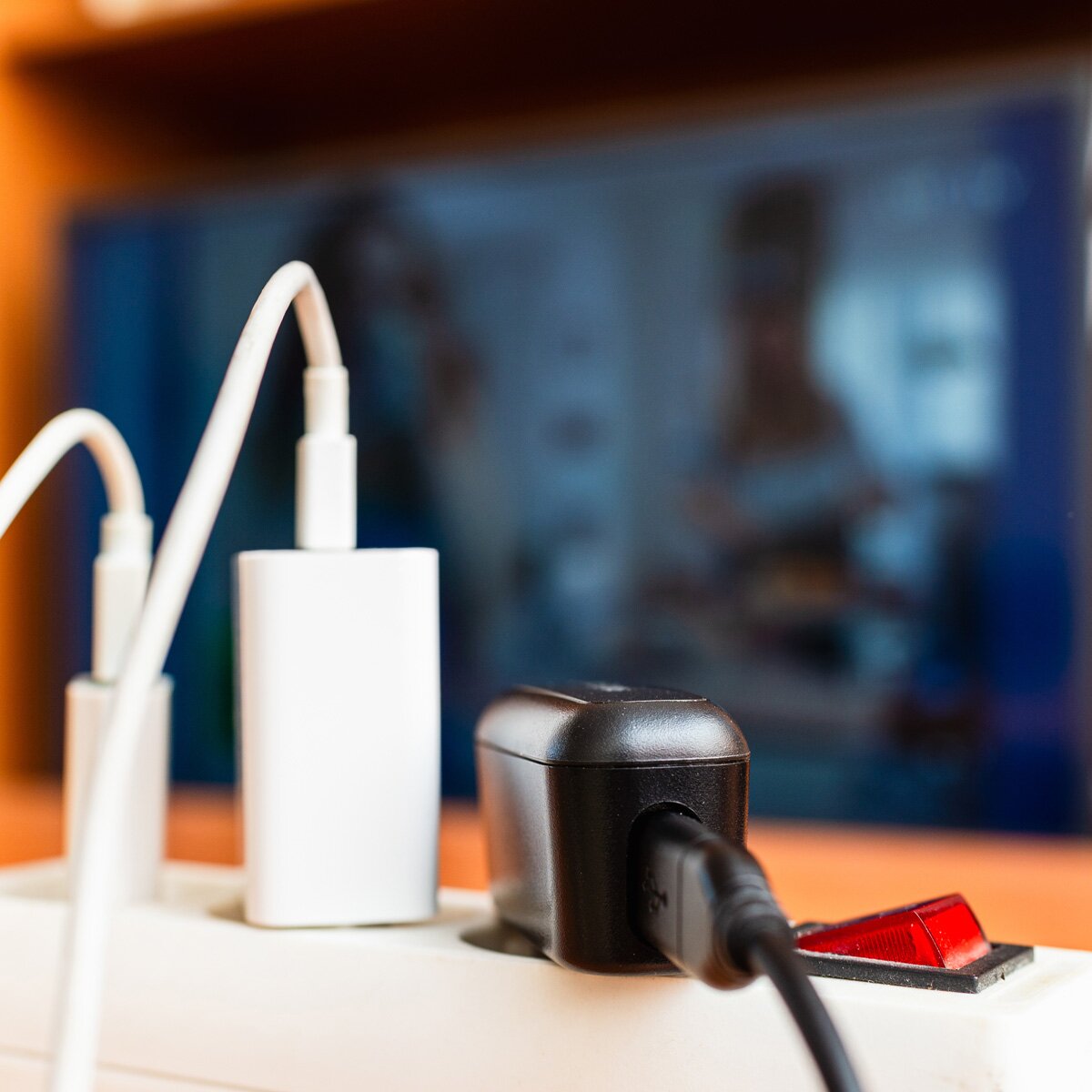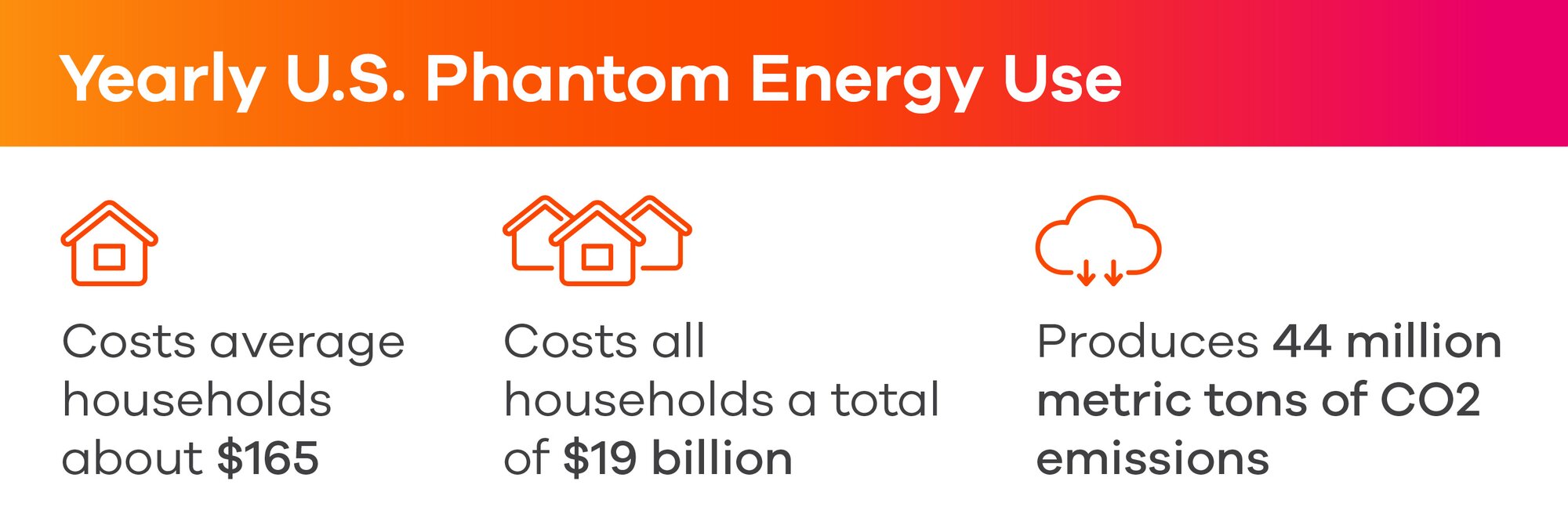Reducing Phantom Energy Use
08/22/2025

Everywhere you look, electronic devices and appliances are making our lives easier—and have been for a long time. From smartphones and robot vacuums to refrigerators, laptops and microwaves, where would we be these days without the convenience, speed and connectivity they provide? Unfortunately, there’s a hidden cost. Some of these devices continue to steal power, even when you think they’re off. That’s why it’s worth taking a closer look at reducing phantom energy use.
What is phantom energy?
Also known as vampire power, phantom energy is the electricity used by devices and appliances that are plugged in but not actively in use. Electronics that feature standby modes, clocks, timers, displays and remote sensors stay active. And, like death from a thousand cuts, these small, seemingly minor uses of energy can add up over time.
What does phantom energy cost us?
In U.S. households, phantom energy can sometimes account for up to 23% of a household’s electricity use, according to the National Resource Defense Council. And on average, according to the U.S. Department of Energy, phantom energy collectively costs U.S. households about $19 billion a year. This wasted energy also impacts our environment, as it accounts for about 44 million metric tons of CO2 dispersed into the atmosphere annually.

How do I cut down on phantom energy?
Of course, simply unplugging your devices when not in use will stop phantom energy, but we know that’s not always convenient—or even feasible—so check out some of these alternatives:
- Smart Power Strips: Ranging in price from about $20 to $40, smart power strips allow you to keep devices plugged in with little or no phantom power use. Power gets cut off to anything that uses a standby mode. Some models even have timers or motion sensors to shut off power when needed. Of course, these models with timers and sensors do continue to use energy, but it’s typically only a watt or two, which can still make a difference with multiple devices plugged in that can consume as much as 5 watts each.
- Smart Power Plugs: Ranging in price from about $10 to $30, smart power plugs function the same as smart power strips, though they just offer a single outlet for use. Like smart power strips, some models can be controlled remotely or allow you to schedule “on” times.
- Energy-Saving Modes: Some TVs, computers and gaming consoles give you options for eco mode or automatic sleep settings. You can also disable “instant-on” features on some of these devices that keep them semi-active. When shopping for such electronics, the Energy Star label is a reliable indicator, though you may have to look closer at features listed on packaging or even take a few minutes to research the product online.
- Device Grouping: You may only want to cut out phantom power use on certain devices. If so, try routing all such electronics to designated power strips so you have the control to shut them off at the same time.
- Energy-Efficient Electronics: Some of the newer electronic devices—especially those with the Energy Star label—come complete with lower standby power consumption abilities. These models tend to have low-power circuits and more efficient transformers and power supplies. They don’t stop phantom power use altogether, but they can drastically cut down on your energy waste.
Phantom power use may be invisible, but it can make a very real impact on your energy costs and the environment. Good thing we’ve all got a few smart options to help.
 Help
Help Giving Back
Giving Back My Account
My Account Sign Up
Sign Up











